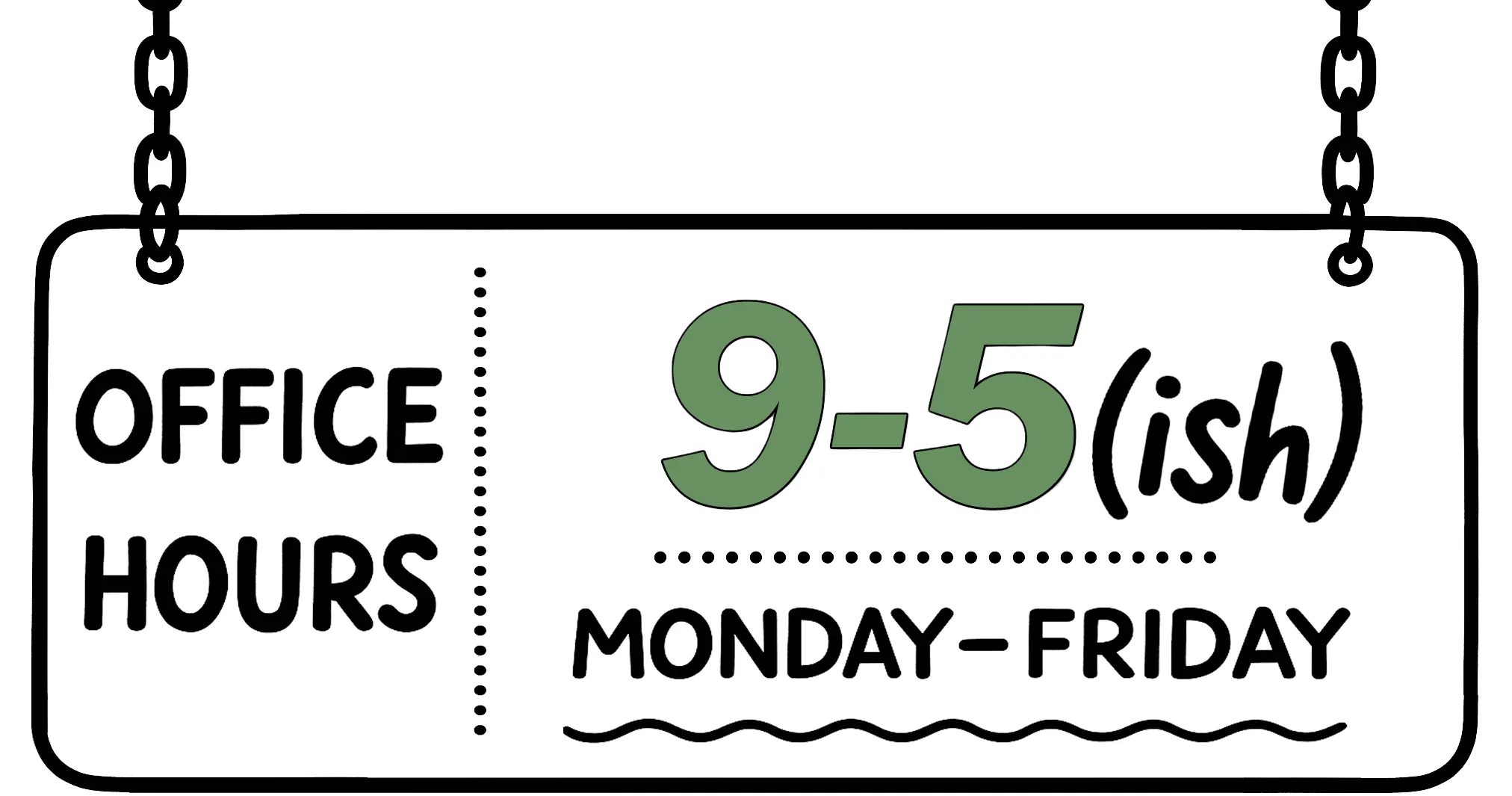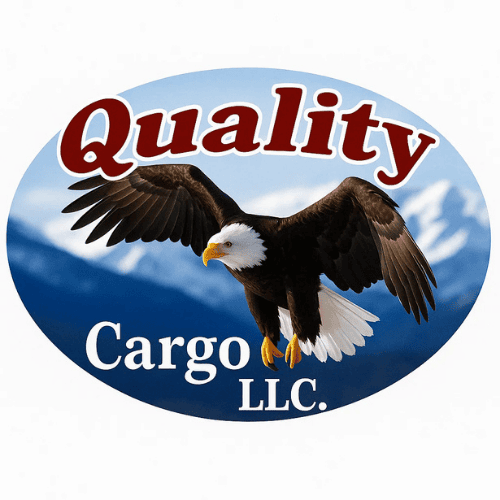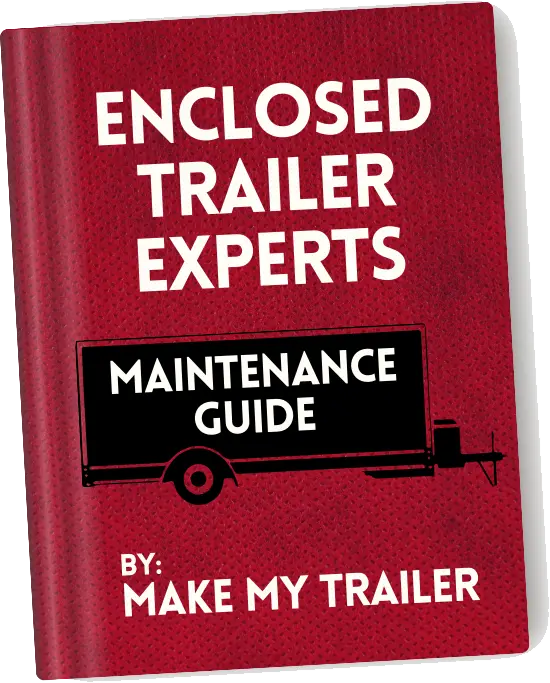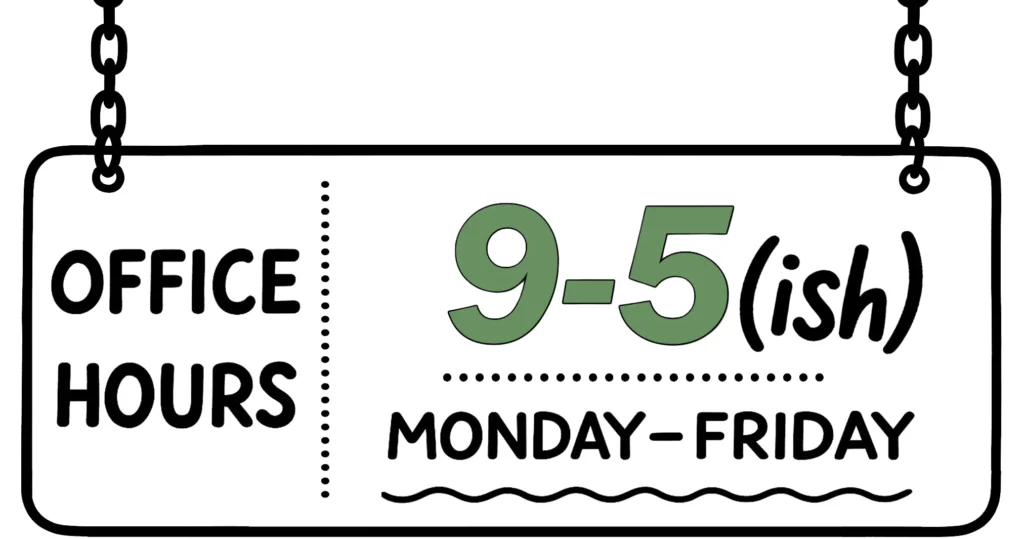Everything you need to know about the
8.5x18 Double Axle - Quality Cargo
- 8.5×18 Double
- Maintenance & More
8.5x18 Double Axle - Quality Cargo
1. Technical Features Table
→ → →
| Standard Features | Quality |
| PRICE | $6,580.00 |
| EXTERIOR METAL | .024 White metal exterior Semi-Screwless exterior |
| AXLES | Tandem 3500 lb Spring axles w/4" drop and |
| V-NOSE | V Nose (Standard) |
| ELECTRIC BRAKES | Axles w/ Electric Brakes |
| DOME LIGHT | 12V Dome light with switch |
| WALLS/CEILING TUBING | 1"x1" steel tube in walls and ceiling |
| FLOOR TUBING | 6" Tube Main Frame |
| FLOOR CROSS-MEMBERS | Floor Members 16" O.C. |
| ROOF CROSS-MEMBERS | Roof Members 24" O..C |
| WALL CROSS-MEMBERS | Wall Members 16" O.C. |
| LIGHTS | LED Strip tail lights |
| INTERIOR HEIGHT | 6'6" (78") Interior Height |
| REAR DOOR | Rear Ramp w/ Spring Assists w/Flap |
| PLUG / COUPLER (BALL) | 7-way Round elec. Plug 2 5/16" coupler |
| FENDERS | Aluminum fenders w/lights |
| SIDE DOOR | 32" RV style side door with flush lock |
| ATP | V-Nose with vertical ATP trim |
| TIRES | 15" Tires |
| RIMS/WHEELS | Silver Mod Wheels |
| ROOF MATERIAL | Galvalume roof |
| STONEGUARD | 24" Stoneguard on front |
| TONGUE JACK | 2000 lb tongue jack |
| HUBS | EZ Lube Hubs |
| WALL MATERIAL | Premium 3/8" plywood sidewalls |
| FLOOR MATERIAL | 3/4" plywood floor/painted underneath |
| SIDEWALL VENTS | Non-powered roof vent or sidewall |
| DRINGS | 4 D-Rings in Floor |
| BEAVERTAIL | Beavertail Frame |
| EMPTY WEIGHT | 3000 lbs |
| LOAD CAPACITY | 4000 lbs |
| GVWR | 7000 lbs |
| TONGUE WEIGHT | 450 lbs |
2. Technical FAQ

Overall Length: 21’6″ / 258 in (Breakdown: 18′ on the Box + 3’6″ on the Tongue) 20″ on the Vnose
Overall Width: 8’6″/ 102 in (Breakdown: 8’6″ on the Box)
Overall Height ( Diamond ): 8’4″ / 100 in (Breakdown: 7′ on the Box + 16″from the ground to the box)
Overall Height (Anvil): 7’10” / 94 in (Breakdown: 6’6″ on the Box + 16″from the ground to the box)
Overall Length: 17’9″ Box (Breakdown: Subtract 3″ which counts for rear door & framing) plus 20″ on the Vnose
Overall Width: 8′ Wall to Wall (Breakdown: Subtract 3″ (each wall) which counts for framing & Plywood)
Width Between Wheel Boxes: 81 inches (Breakdown: Subtract 7.5″ (each side) which counts for wheel boxes
Overall Height ( Diamond ): 7′
Overall Height (Anvil): 6’6″
Width: 90″ (Breakdown: Subtract 12″ (6 on each side) which counts for plywood & framing)
Height ( Diamond ): 78″ (Breakdown: Subtract 6″ which counts for plywood & framing)
Height (Anvil): 72″ (Breakdown: Subtract 6″ which counts for plywood & framing)
7-way Round plug
5×4.5 (5 Lug)
6 Ply
Screws are 4′ apart instead of being every 2′
It’s an asphalt undercoating paint
We developed a section exclusively for Custom Options where we show sample photos and explain most popular options:
Click Here for More Information.
Here are examples of some of the most popular Custom Options:
– Blackout Package
– Electrical Package
– Insulation Package
– Rubber Flooring
– Etracks
– D-rings
– Windows
– Extended Tongue
– Extra Height
– Ladder Racks
– Finished Interior (Metal/Vinyl)
– Air Conditioner
– Lighting Options
– Axle Upgrades
– Concession Window
– Special Door Options
– Cabinets
– Barn Doors
3. Sample Photos
4. Sample Video
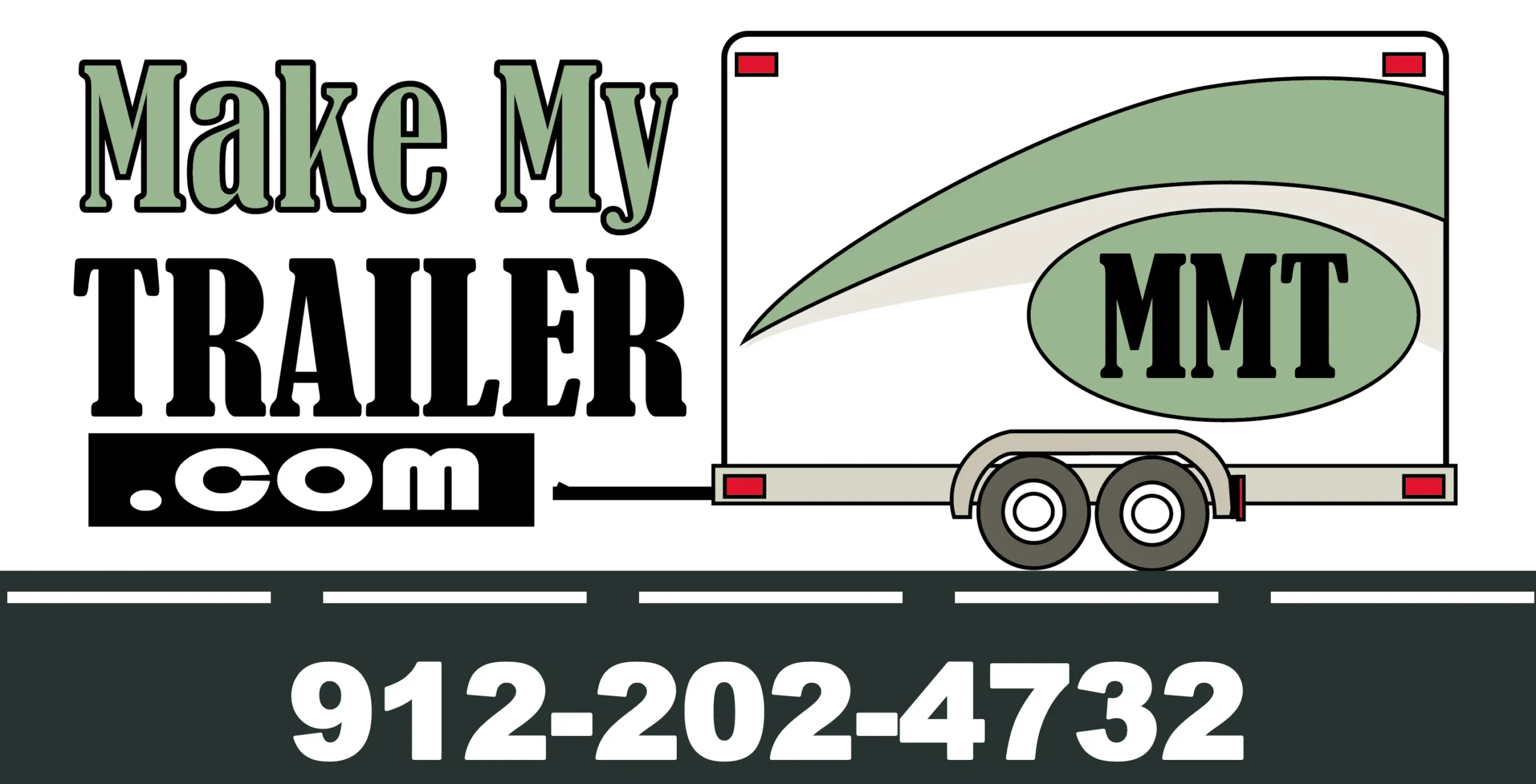
5. Sample Colors (Click to enlarge)
6. Purchase FAQ
Click the link below for Financing Options:
https://makemytrailer.com/enclosed-trailer-financing-services/
Click the link below for Delivery Options:
https://makemytrailer.com/delivery/
30 Day Temporary Tag, Certificate of Origin and obviously your Title so you can register your brand new trailer
Yes they are and also the reason why your trailer pick up is directly at the Factory.
We do not charge any taxes, that’s something that you pay when you register the trailer
Yes, as soon as your trailer is ready we can provide your with your VIN number.
1) Credit or Debit Card (over the phone or invoice sent to your email)
2) Mail a Cashier’s Check
3) Wire Transfer
Once your deposit is confirmed we’ll send you an email just make everything official and after 24 hours (timeframe we provide in case of any changes) we will send your order to our production team so they can start working on your future top notch trailer
It depends on 2 factors: The season and your Order so make sure to ask our awesome sales team for a more accurate completion timeframe but on average you might be looking between 2 to 4 weeks on standard order and about 3 to 5 weeks for orders with custom options.
Note: We do make exceptions so make sure to ask our sales team
We don’t usually provide any updates during the building process but we can definitely ask our production team how things are going but as soon as your trailer is ready, we will send you the completion email along with the instructions so you can start your pick up arrangements
By clicking Buy Now, you will be redirected to our secure PayPal checkout page. A deposit is required to reserve the standard version of this trailer size. The remaining balance, including any selected options or upgrades (such as A/C or insulation), will be due at pickup or delivery. Final price may vary depending on manufacturer and features. Please contact us to confirm details before completing your order.
7. Get a Quote
Have you recently invested in an enclosed cargo trailer, or are you looking to maximize the lifespan and efficiency of your current one? Our comprehensive PDF guide is your ultimate companion to mastering the art of trailer maintenance!
- Step-by-step instructions on pre-use checks to ensure safety and readiness for the road.
- Expert advice on periodic maintenance routines to keep your trailer in peak condition.
- DIY tips for interior and exterior care, from flooring maintenance to rust prevention.
- Winterizing strategies that protect your investment through the coldest months.
- Essential insights into tire care, brake maintenance, and the importance of proper ventilation.
- Bonus content: Safety equipment checklist, emergency preparedness, and much more!
Safeguard Your Investment:
10 Smart Ways to Prevent Trailer Theft!

Master Your Purchase: Essential Tips for 8.5x18 Double Axle Quality Cargo Trailers
An 8.5×18 double axle cargo trailer is more than just a box on wheels; it’s a critical tool for businesses, a mobile garage for enthusiasts, and a reliable partner for countless hauling needs. Making the right choice is a significant investment in efficiency, safety, and peace of mind. Navigating the myriad of specifications, options, and sales pitches can be daunting. This guide cuts through the noise, providing the essential knowledge you need to master your purchase and select a quality trailer that serves you reliably for years to come.
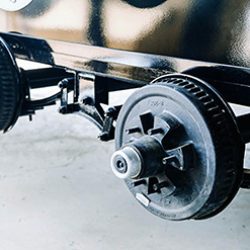
The 8.5×18 Double Axle Advantage: A Workhorse for Diverse Needs
The 8.5×18 size hits a sweet spot, offering substantial interior space without being excessively difficult to maneuver. It’s large enough for classic cars, UTVs, landscaping equipment, or a full contractor’s toolkit. The double axle configuration is the key to its capability, providing superior stability and weight distribution for heavy or bulky cargo, ensuring a safer, smoother journey on the road.
Why Quality Matters: Protecting Your Investment and Ensuring Safety
A cheap trailer can become expensive quickly through repairs, downtime, and potential damage to your cargo. Investing in a quality trailer from a reputable manufacturer means choosing robust materials, superior construction, and reliable components. This commitment to quality isn’t just about longevity; it’s a fundamental aspect of safety, protecting you, your cargo, and others on the highway.
What This Guide Will Cover: From Selection to Long-Term Ownership
This comprehensive guide will walk you through every critical stage of the buying process. We’ll decode technical specifications, explore essential features, provide a pre-purchase inspection checklist, and discuss financing and maintenance. By the end, you’ll be equipped to make an informed decision with confidence, ensuring your new trailer is a perfect match for your needs.
Decoding the Specs: What Really Matters for an 8.5×18 Double Axle Trailer?
Understanding the core specifications is the first step in differentiating a high-quality trailer from an inferior one. These numbers and terms define the trailer’s fundamental capabilities and limitations.
Understanding GVWR and Payload Capacity: How Much Can You Truly Carry?
Gross Vehicle Weight Rating (GVWR) is the maximum total weight the trailer can safely handle, including its own weight (curb weight) and the cargo inside. The payload capacity is the GVWR minus the trailer’s curb weight. It’s crucial to match the GVWR to your heaviest anticipated loads, ensuring you have a safe margin. Overloading is a primary cause of axle, tire, and frame failure.
The Power of Double Axles: Stability, Load Distribution, and Ride Quality
The double axle (or tandem axle) design is the cornerstone of an 8.5×18 trailer’s strength. Having two axles distributes the cargo weight over eight tires instead of four, drastically improving stability and reducing sway. This design also provides redundancy; if one tire fails, the other on the same side can help maintain control. Each AXLE is equipped with its own braking system, enhancing stopping power.
Optimal Trailer Size and Interior Height: Matching Your Hauling Requirements
While the 8.5×18 footprint is standard, interior height is a critical variable. A standard 6’6″ height is adequate for many uses, but opting for a 7′ or even 7’6″ height can be a game-changer for taller vehicles like UTVs or for simply moving around inside more comfortably. Always measure your largest piece of cargo to determine your minimum height requirement.
V-Nose vs. Flat-Nose: Aerodynamics, Fuel Efficiency, and Usable Space
The V-nose design offers better aerodynamics, reducing wind resistance and potentially improving your tow vehicle’s fuel efficiency on long hauls. It also adds a few feet of interior storage space at the front, perfect for shelving or securing smaller items. A traditional flat-nose trailer, however, provides a more uniform, rectangular interior space, which some users prefer for wall-to-wall cargo placement.
Beyond the Basics: Essential Features for Quality and Durability
A trailer’s true quality is revealed in the details of its construction and the components used. Look beyond the basic dimensions to assess the features that ensure longevity and reliable performance.
Robust Construction and Premium Materials: The Foundation of a Quality Trailer
The trailer’s frame is its skeleton. Look for heavy-duty steel tube mainframes (e.g., 6″ I-beam) and floor crossmembers spaced 16 inches on-center for maximum floor support. The exterior skin is another key detail. While standard .024 gauge aluminum is common, upgrading to .030 or .040 gauge Aluminum provides superior resistance to dents and “oil canning” (rippling). Pay attention to the quality of the screws used; color-matched or screwless exteriors indicate a higher level of finish.
Doors, Ramps, and Loading Solutions: Maximizing Accessibility and Functionality
A heavy-duty Ramp Door with spring assist is essential for easy loading of rolling equipment. Ensure it has a high weight capacity and a transition flap for a smooth entry angle. The side door should be robust, with a secure RV-style latch and lock for convenience and safety. Consider the placement and size of all doors to ensure they fit your workflow. For some, double barn-style rear doors are a preferable option.
Tires, Wheels, and Braking Systems: Performance and Safety on the Road
A double axle trailer must have electric brakes on both axles for safe, controlled stopping. A breakaway kit, which activates the trailer brakes if it detaches from the tow vehicle, is a non-negotiable safety feature. The tires should be high-quality radial tires, not bias-ply, as they offer better heat dissipation, a smoother ride, and longer life. Check the load rating on each tire to ensure it’s appropriate for the trailer’s GVWR.
Lighting and Electrical Connectivity: Visibility and Functionality
All-LED lighting is the modern standard for trailers. LEDs are brighter, last longer, and draw less power than traditional incandescent bulbs. This includes tail lights, brake lights, turn signals, and clearance markers. Proper lighting ensures you are visible and compliant with road safety regulations. The 7-way round electrical plug is standard for connecting these systems to your tow vehicle.
Interior Comfort and Cargo Management: Practicality and Protection
A quality trailer interior features durable flooring, like 3/4″ engineered wood or pressure-treated plywood. Walls made of 3/8″ plywood provide a sturdy surface for mounting equipment. For cargo security, look for multiple floor-mounted D-rings or consider E-track systems, which offer versatile tie-down points along the walls and floor. These details protect both your cargo and the trailer itself.
The Smart Buyer’s Checklist: Pre-Purchase Inspection & Due Diligence
Before any money changes hands, a thorough inspection and a series of pointed questions are your best tools for verifying quality and avoiding future problems.
The Visual Inspection: What to Look For Before You Buy
Walk around and inside the trailer. Look for clean, consistent welds on the frame. Check the exterior panels for dents or waves. Operate the ramp door and side doors to ensure they function smoothly. Inspect the floor for soft spots and ensure the sealant around the roof edges and exterior trim is neat and complete. Check the tire tread and manufacturing date (DOT code).
Essential Documentation: What to Expect and Verify
Ensure the dealer or manufacturer provides a Certificate of Origin (COO) or title, which is necessary for registration. You should also receive a bill of sale detailing the trailer’s VIN, features, and final price. Finally, ask for warranty documents. A reputable manufacturer will offer a warranty (often 1-5 years) covering structural defects, which speaks to their confidence in the factory build.
Asking the Right Questions to Your Manufacturer or Dealer
Don’t hesitate to ask specific questions. Inquire about the on-center spacing of the frame, wall studs, and roof bows. Ask about the gauge of the aluminum skin, the specific brand and type of axles used, and the plywood grade. A knowledgeable salesperson should be able to provide these details confidently. Their answers will reveal a lot about the product’s quality.
Customization and Options: Tailoring Your Trailer to Specific Needs
One of the greatest advantages of buying a new trailer is the ability to customize it. Common custom options include extra height, upgraded axles, electrical packages (outlets, interior lights), ladder racks, or specific flooring like aluminum tread plate. Discuss these options upfront to create a custom trailer that perfectly suits your intended use, directly from the factory.
Financing Your Investment: Options and Considerations
For many, financing is a practical way to acquire the right trailer without a large upfront cash outlay. Understanding the available financing options is key to making a sound financial decision.
Understanding Lease-to-Own and Traditional Financing Solutions
Traditional financing works like a standard auto loan, where you apply for credit, and upon approval, make monthly payments for a set term. Lease-to-own or rent-to-own programs are an alternative, often with no credit check required. These plans typically have higher overall costs but offer flexibility and a path to ownership for those with credit challenges.
Navigating Price, Quotes, and Deposits
When you see a trailer for sale, always request a detailed, “out-the-door” quote that includes all fees, taxes, and any custom options. This prevents surprises at the time of purchase. A deposit is typically required to begin a custom build or to hold a specific unit from inventory. Clarify whether the deposit is refundable before committing.
Calculating Your Payments: Using a Payment Calculator for Budgeting
Most dealers and manufacturers offer online payment calculators. Use these tools to estimate your monthly payments based on the sale price, down payment, interest rate, and loan term. This allows you to experiment with different financing scenarios and find a payment plan that fits comfortably within your budget, making the entire financing process more transparent.
Mastering Ownership: Essential Maintenance for Longevity and Performance
Your responsibility doesn’t end after the sale. Proper maintenance is the single most important factor in ensuring your trailer’s long-term performance, safety, and value.
The Art of Trailer Maintenance: A Lifelong Commitment to Your Investment
Create a regular maintenance schedule. This includes checking seals for leaks, lubricating hinges and moving parts, and washing the exterior to prevent corrosion. A well-maintained trailer not only functions better but also holds its resale value significantly longer.
Routine Pre-Use Checks: Safety First Before Every Trip
Before every trip, perform a quick walk-around. Check that the coupler is securely latched, safety chains are crossed and attached, and the electrical plug is connected. Test all lights—running lights, brake lights, and turn signals—to ensure they are working properly. This simple, five-minute check is a critical safety habit.
Brake System Care: Maintaining Your Electric Brakes
Regularly check the condition of your electric brakes. Listen for any unusual grinding noises and periodically have the brake shoes and magnets inspected for wear. Ensure the emergency breakaway battery is always charged. Proper brake function is paramount for safely controlling the trailer, especially when carrying heavy cargo.
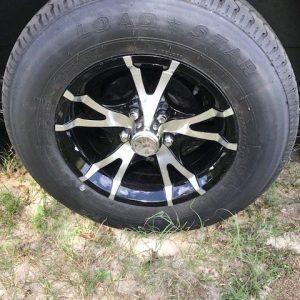
Comprehensive Tire Care: Extending Lifespan and Ensuring Safety
Proper tire maintenance is vital. Check the tire pressure on all eight tires (and the spare) before each haul, ensuring they are inflated to the manufacturer’s recommended PSI. Regularly inspect for uneven wear, cuts, or bulges. A sudden tire failure on the road can be catastrophic, making diligent care a top priority.
Next Up>>> 8.5×20 double axle quality cargo

